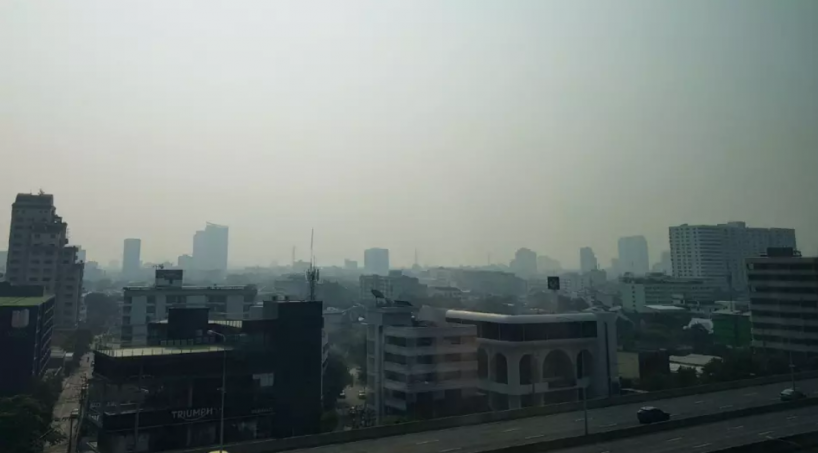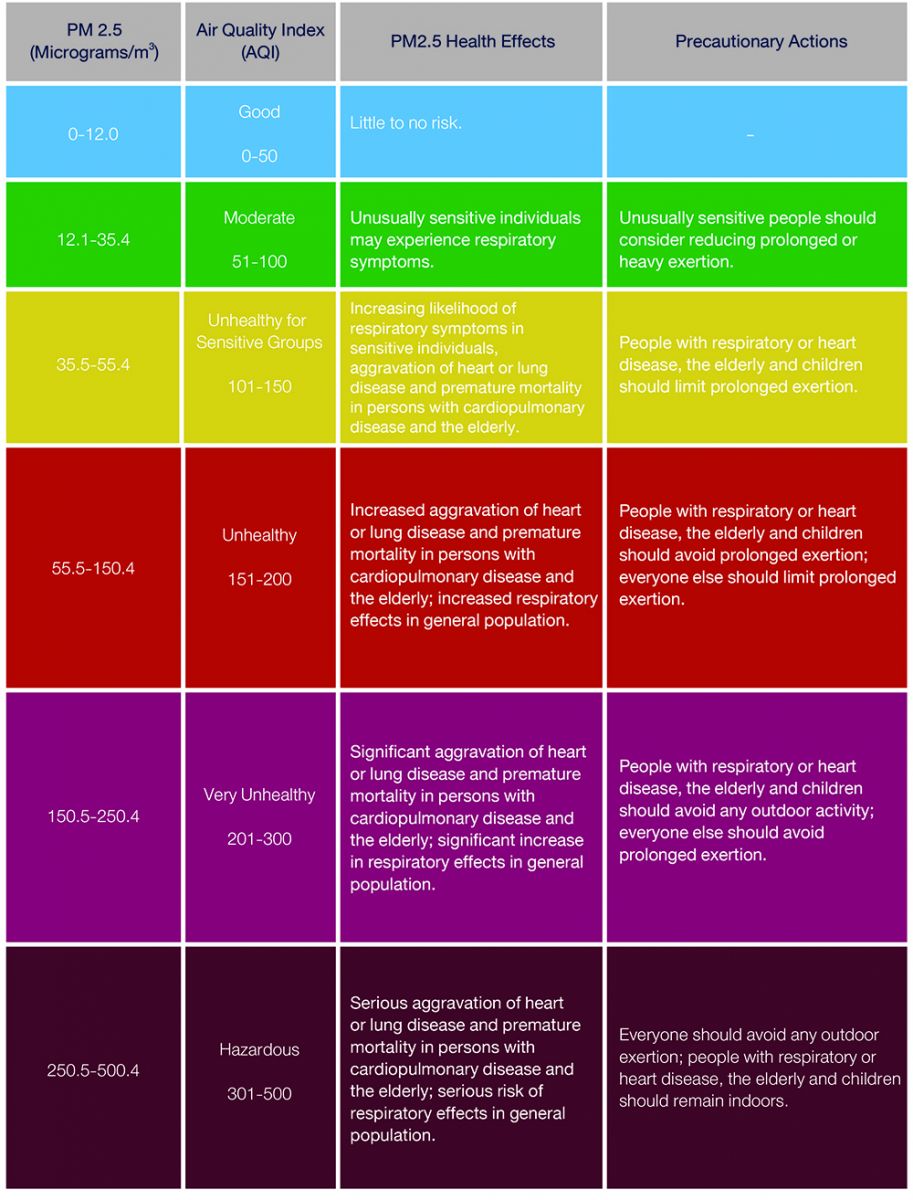Why Should We Care PM 2.5?Read 24,353

PM2.5 refers to atmospheric particulate matter (PM) that have a diameter of less than 2.5 micrometers, which is about 3% the diameter of a human hair. Commonly written as PM2.5, particles in this category are so small that they can only be detected with an electron microscope.
Fine particles can come from various sources. They include power plants, motor vehicles, airplanes, residential wood burning, forest fires, agricultural burning, volcanic eruptions and dust storms. Some are emitted directly into the air, while others are formed when gases and particles interact with one another in the atmosphere. For instance, gaseous sulfur dioxide emitted from power plants reacts with oxygen and water droplets in the air to form sulfuric acid as a secondary particle.
Fine particles can come from various sources. They include power plants, motor vehicles, airplanes, residential wood burning, forest fires, agricultural burning, volcanic eruptions and dust storms. Some are emitted directly into the air, while others are formed when gases and particles interact with one another in the atmosphere. For instance, gaseous sulfur dioxide emitted from power plants reacts with oxygen and water droplets in the air to form sulfuric acid as a secondary particle.
Why Are PM2.5 Dangerous?
Since they are so small and light, fine particles tend to stay longer in the air than heavier particles. This increases the chances of humans and animals inhaling them into the bodies. Owing to their minute size, particles smaller than 2.5 micrometers are able to bypass the nose and throat and penetrate deep into the lungs and some may even enter the circulatory system.
Fine particles are known to trigger or worsen chronic disease such as asthma, heart attack, bronchitis and other respiratory problems.
A study published in the Journal of the American Medical Association suggests that long-term exposure to PM2.5 may lead to plaque deposits in arteries, causing vascular inflammation and a hardening of the arteries which can eventually lead to heart attack and stroke.
Fine particles are known to trigger or worsen chronic disease such as asthma, heart attack, bronchitis and other respiratory problems.
A study published in the Journal of the American Medical Association suggests that long-term exposure to PM2.5 may lead to plaque deposits in arteries, causing vascular inflammation and a hardening of the arteries which can eventually lead to heart attack and stroke.
How to Read PM2.5 Readings
Due to the many adverse effects fine particles can inflict on a large number of people, PM2.5 is one of the major pollutants closely monitored by health authorities around the world. You will most likely come across a dedicated column for PM2.5 alongside the Air Quality Index (AQI), Pollutants Standards Index (PSI) or the air quality standards adopted by your country.
On a very clear and non-hazy day, the PM2.5 concentration can be as low as 5 μg/m3 or below. The 24-hour concentration of PM2.5 is considered unhealthy when it rises above 35.4 μg/m3.
Why 24-hour and not a shorter duration when evaluating the health impact of fine particles? This is because the potential damage caused by air pollutants depends not just on the concentration, but also on the duration of exposure. The longer you are exposed to PM2.5, the higher the risk of developing adverse effects caused by the exposure. That’s why a 24-hour measurement is a better reflection of the health effects of fine particles than say a three-hour reading.
The table below will give you a sense of what levels of PM2.5 are harmful and the appropriate precautions you need to take. It is based on the air quality standards for particle pollution published by the U.S. Environmental Protection Agency.
On a very clear and non-hazy day, the PM2.5 concentration can be as low as 5 μg/m3 or below. The 24-hour concentration of PM2.5 is considered unhealthy when it rises above 35.4 μg/m3.
Why 24-hour and not a shorter duration when evaluating the health impact of fine particles? This is because the potential damage caused by air pollutants depends not just on the concentration, but also on the duration of exposure. The longer you are exposed to PM2.5, the higher the risk of developing adverse effects caused by the exposure. That’s why a 24-hour measurement is a better reflection of the health effects of fine particles than say a three-hour reading.
The table below will give you a sense of what levels of PM2.5 are harmful and the appropriate precautions you need to take. It is based on the air quality standards for particle pollution published by the U.S. Environmental Protection Agency.

Source: U.S. Environmental Protection Agency
How to Protect Yourself Against PM2.5
When the amount of PM2.5 is at unhealthy level, take these steps to reduce exposure and protect your health:
• Stay indoor and close all windows and openings that allow polluted air to enter, when possible.
• Turn on an air purifier that is equipped with a HEPA filter. Only a HEPA filter can effectively remove fine particles from the air.
• When most or all windows are closed, do not burn candle, incense or operate devices that emit smoke or gas to prevent harmful particles and gas (such as carbon monoxide) from building up.
• Boost your body’s resistance against PM2.5 by increasing your intake of these nutrients.
• If you must go outdoor, make it short and quick, and wear a N95 or higher face mask.
Credit Picture Thairath Online
Credit Content https://blissair.com/what-is-pm-2-5.htm
• Stay indoor and close all windows and openings that allow polluted air to enter, when possible.
• Turn on an air purifier that is equipped with a HEPA filter. Only a HEPA filter can effectively remove fine particles from the air.
• When most or all windows are closed, do not burn candle, incense or operate devices that emit smoke or gas to prevent harmful particles and gas (such as carbon monoxide) from building up.
• Boost your body’s resistance against PM2.5 by increasing your intake of these nutrients.
• If you must go outdoor, make it short and quick, and wear a N95 or higher face mask.
Credit Picture Thairath Online
Credit Content https://blissair.com/what-is-pm-2-5.htm





